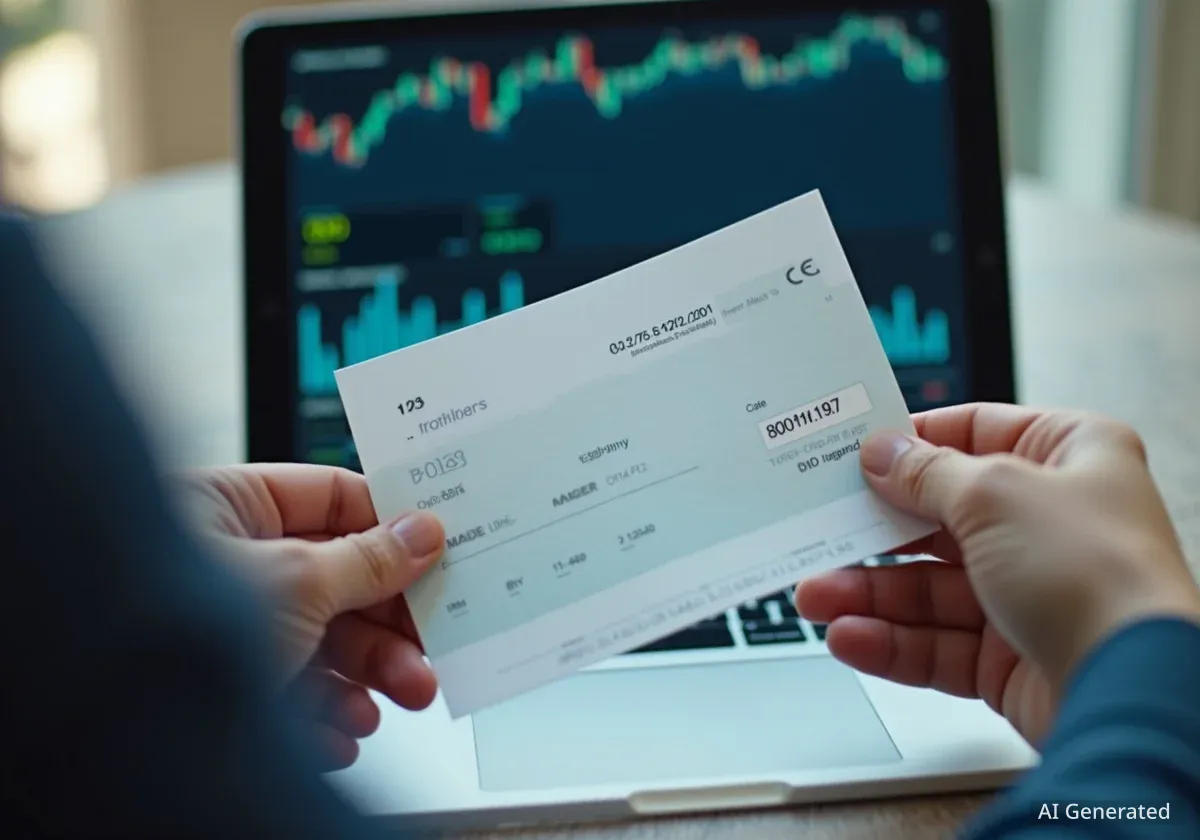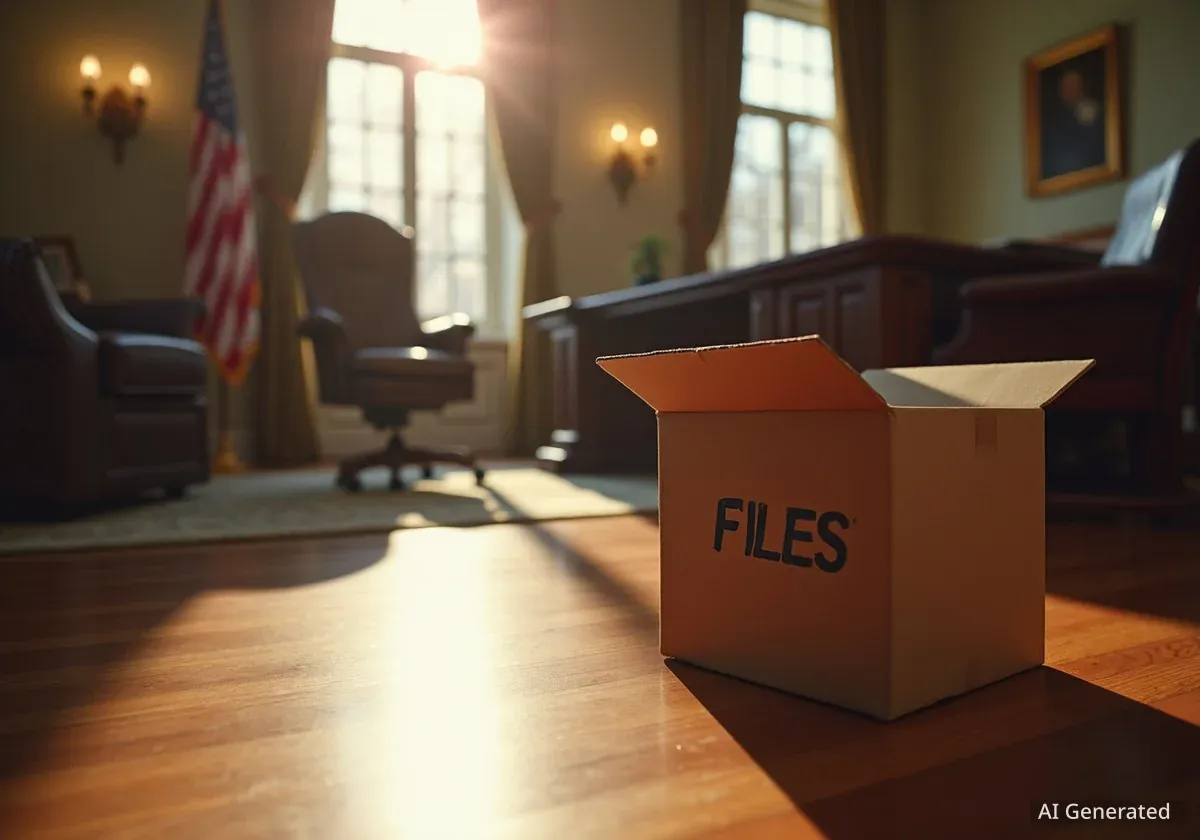The Social Security Administration (SSA) has confirmed it will stop issuing paper checks for benefit payments at the end of this month. More than 500,000 recipients who currently receive paper checks must switch to an electronic payment method before the September 30, 2025, deadline.
This policy change is part of a government-wide effort to modernize federal disbursements, increase security, and reduce administrative costs. Beneficiaries have two primary options: direct deposit into a bank account or receiving funds via a Direct Express prepaid debit card.
Key Takeaways
- Final Deadline: Paper checks for Social Security and Supplemental Security Income (SSI) will be discontinued after September 30, 2025.
- Affected Recipients: The change impacts over 500,000 beneficiaries, representing less than 1% of the total 70 million recipients.
- Required Action: Individuals must enroll in direct deposit or sign up for a Direct Express debit card to continue receiving payments without interruption.
- Reason for Change: The transition aims to improve payment security, eliminate mail delays, and lower operational costs for the U.S. government.
The Transition to Electronic Payments
The move to fully electronic payments marks a significant operational shift for the Social Security Administration. While the vast majority of the 70 million Americans who receive benefits have already adopted digital payments, a small but notable group has continued to rely on traditional paper checks mailed each month.
According to the SSA, approximately 0.8 percent of beneficiaries will be directly affected by this change. This figure translates to more than half a million people, including retired workers, individuals with disabilities, and survivors of deceased workers, who need to update their payment information.
The mandate for this transition stems from Executive Order 14247, issued in March 2025, which called for the modernization of all federal payment systems. The SSA has been proactively contacting affected individuals to provide information and assistance ahead of the deadline.
Background on the Mandate
Executive Order 14247, titled "Modernizing Federal Disbursements," requires all federal agencies to transition to electronic payment methods. The order was designed to improve efficiency, enhance security against fraud and theft, and generate cost savings for taxpayers. The Social Security Administration is one of the largest federal agencies implementing this change.
Options for Receiving Future Benefits
To avoid any disruption in payments, beneficiaries must select one of two electronic options. The SSA has outlined clear procedures for making the switch.
How to Enroll in an Electronic Method
Recipients have several ways to update their payment preferences:
- Direct Deposit: This is the most common method, where funds are sent directly to a personal checking or savings account. Beneficiaries can enroll online through their secure "my Social Security" account on the SSA website.
- Direct Express Debit Card: For those without a bank account, the Direct Express card is a prepaid debit card. Funds are loaded onto the card each month, which can then be used for purchases or cash withdrawals. Enrollment can be completed by calling 1-800-333-1795 or visiting the official Direct Express website.
- Special Assistance: Supplemental Security Income (SSI) recipients and beneficiaries living abroad can receive help by calling the SSA's main line at 1-800-772-1213.
Financial experts note that while the transition is beneficial, it requires vigilance from seniors and their caregivers.
"As with any new system, there will be a steep learning curve, so seniors and their caretakers must be extra vigilant in their efforts to avoid phishing scams by ensuring they are logging onto the correct websites and payment systems," Drew Powers, founder of Powers Financial Group, told Newsweek.
The Driving Forces Behind the Change
The primary motivations for eliminating paper checks are enhanced security and significant cost reductions. The SSA has highlighted the vulnerabilities associated with physical mail, which creates opportunities for theft and fraud.
Cost Savings Analysis
The U.S. government incurs substantially different costs for payment methods. Issuing a paper check costs approximately $0.50, while an electronic funds transfer (EFT) costs less than $0.15. By transitioning the remaining recipients, the SSA estimates it will reduce annual payment costs by more than $2 million.
"A senior citizen's mailbox is a prime entry point for theft and fraud," Powers explained. "Moving away from paper checks to a more direct, more secure, electronic payment is another step in minimizing financial elder abuse."
Alex Beene, a financial literacy instructor for the University of Tennessee at Martin, described the move as one of the most important shifts in the program's history. He noted that electronic payments are not only safer but also more efficient.
"This should be more efficient in delivering funds to recipients, while also cutting down on fraud, which usually is easier to accomplish with paper checks than other payment means," Beene stated.
What Happens After September 30
After the deadline, the SSA will no longer mail paper checks. It is crucial for affected individuals to have an electronic payment method on file to ensure their benefits continue without delay. The agency has stated that there is a limited waiver available for those who cannot access electronic payments, though the criteria for this waiver are specific.
The SSA encourages anyone who has not yet made the switch to act immediately. Family members and caregivers are also urged to assist beneficiaries in navigating the enrollment process, whether online or by phone.
This final step in the agency's modernization efforts aligns with broader trends in digital banking and federal administration. By ensuring all payments are electronic, the SSA aims to create a more reliable and secure system for all 70 million Americans who depend on its benefits.





